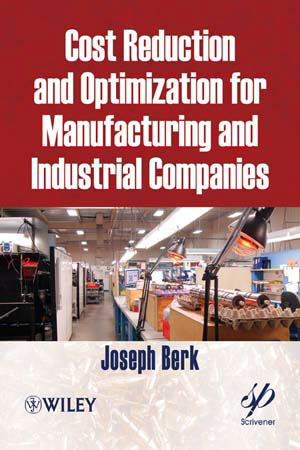|
Cost Reduction
Cost reduction is an objective many organizations include in their annual plans, but few people have been trained to efficiently target and realize cost reduction opportunities. The Cost Reduction training program develops an approach for systematically reducing expenses. The program identifies cost reduction opportunities in the areas of:
-
Material usage.
-
Scrap reduction.
-
Packaging improvements.
-
Assembly aids.
-
Process improvements.
-
Enhanced procurement philosophies.
-
Product design simplifications.
-
Transportation improvements.
-
Inspection and test redesign.
-
Improved warranty designs.
-
Material and paperwork movement reductions.
-
Inventory reduction.
-
Productivity improvement.
Course Materials

Who Should Attend
Engineers, manufacturing engineers, program managers, product line managers, buyers, and manufacturing managers should attend this training.
Cost Reduction Syllabus
-
Class 1: Identifying Cost and Cost Reduction Opportunities. Cost and accounting data. Productivity data. Assessing headcount. Assessing material costs. Identifying dominant costs and cost reduction targets. Cost Pareto analysis from material, organization, and buyer/supplier perspectives. Class exercise.
-
Class 2: Value Engineering Concepts. Assessing functions and design requirements. Using substitute materials. Product simplification concepts. Assessing design and quality requirements internally, at suppliers, and at the customer. Class exercise.
-
Class 3: Materiel Opportunities. Make or buy considerations. Assessing work allocation. Controlling supplier cost growth. Identifying Procurement cost reduction opportunities. Soliciting supplier involvement. Competition versus teaming. Assessing and reducing WIP and raw material inventory levels. Class exercise.
-
Class 4: Manufacturing Opportunities. Labor standards and productivity measurement. Implementing reasonable expectations. Learning curves. Process yield targeting. Assembly aids. Using quality assurance data to focus cost reduction efforts. MRB and MRP considerations. Class exercise.
-
Class 5: Quality Assurance Opportunities. Inspection point selection issues. Consumer and producer risk. Statistical process control considerations. Dock-to-stock issues. Certified operator programs. Using quality assurance data. Class exercise. Course summary. Course critique.
|
|
The above training can be customized to meet your requirements. Please call us at 909 204 9984 or contact us via email.
|
